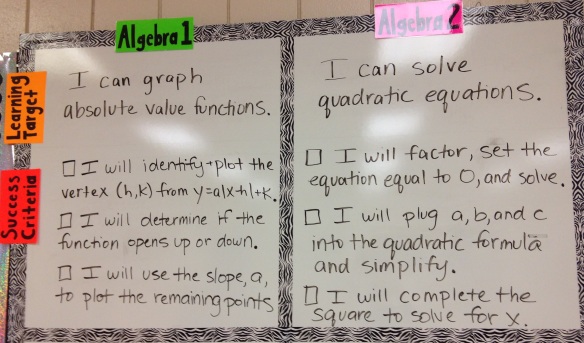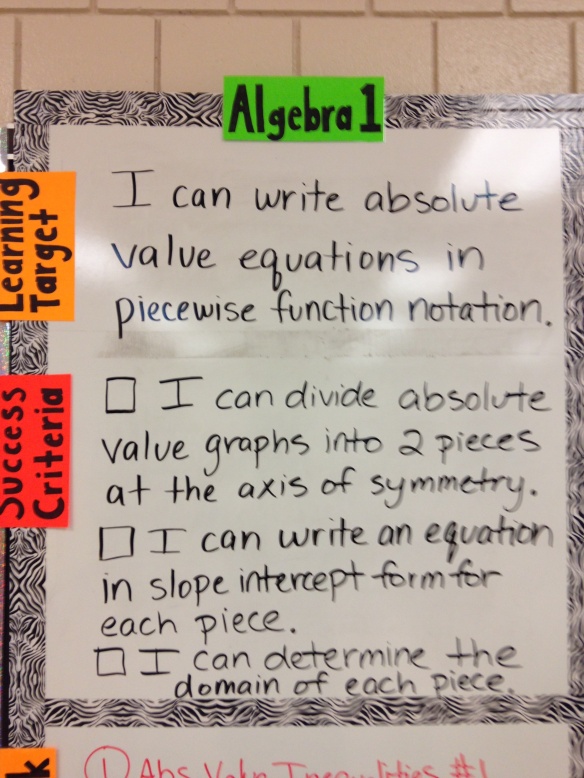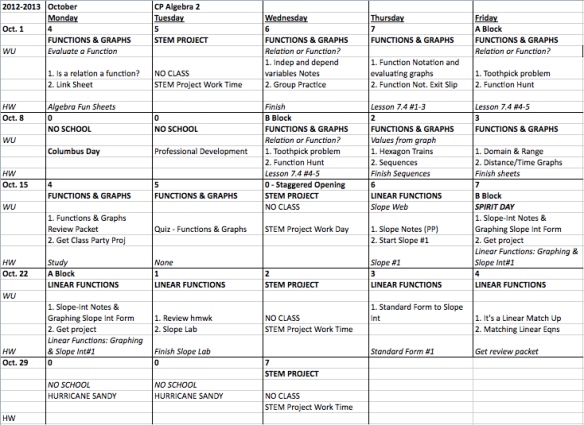Math Notebook
For the past two years I have “required” students to use a three-ring binder with dividers. I say “required” because I did not have a consequence for if and when a student inevitably did not have said binder in class. I thought by hole-punching everything, it would be easy for them to stay as organized as I do. I was wrong. I thought by requiring dividers (notes, homework, quizzes, projects), they would immediately put everything in its place. I was wrong. Since I believe that a neat, organized binder will help students complete assignments on time and assist in assessment preparation, I’m going to make a few changes this year…
- 3-ring binder, NO dividers
- Table of Contents page
- Binder checks
Dividers, I have realized, are not necessary because they tend to make it harder for students to find and place their handouts… “Does this go under notes or classwork?” I don’t use dividers to organize my materials, so why should they? I’m going to teach students to place everything in the binder in the order that it is distributed, and document each sheet on the table of contents. Hopefully the large sticky note on my front table (BINDER!) will remind me to do this. The binder checks will be twice per term, consisting of five questions in which the answers can easily be found from note pages, class activities, and homework. If students follow the notebook directions, they should earn easy classwork points. If they don’t, they won’t.
Late Projects
Old policy: I will accept any project late, for a penalty, until the end of each term.
Old thinking: Life happens and sometimes you just can’t turn in a project the day it’s due. But I want every student to complete every project. So I wanted to give every possible opportunity for a student to attempt the project and change that zero in my online grade book.
Problem: Students viewed my project deadlines and due dates as mere suggestions. They knew they had until the end of the term, so they procrastinated. Of course, there are always special circumstances. However, more often than not, students simply didn’t do the project on time because they knew they didn’t have to (and apparently I wasn’t harsh enough when penalizing points).
New policy: Project is due ________________. A letter grade will be deducted each day the project is late (aka you only have five days to turn it in or it’s a zero).
New thinking: I need to hold students more accountable and help them manage their time. I will set up project check-ins (more frequently during term 1) to make sure everyone is on track to finish on time. Students who I identify as needing extra help or time, will be given frequent teacher check-ins and email reminders. Students who do not pass in a project on the actual day it’s due will have a meeting with me and a quick email sent home. My hope is that by communicating this expectation from the beginning of the year, and enforcing it as the first project deadline comes and goes, the students will learn the importance of abiding by due dates.







